Did you know that seasonal produce can contain up to 40% more nutrients than out-of-season alternatives? Eating fruits and vegetables at their peak freshness not only boosts flavor but also maximizes nutrition and supports local farmers.
This practice connects modern diets with ancestral wisdom. For centuries, people relied on what grew naturally each season. Today, aligning meals with nature’s cycles offers dual benefits—better personal health and a smaller environmental footprint.
Choosing in-season foods reduces reliance on long-distance transportation. Less energy is wasted on storage or artificial ripening. The result? Fresher meals and a healthier planet.
Key Takeaways
- Seasonal foods pack more nutrients and flavor.
- Supports local economies and reduces carbon emissions.
- Aligns with sustainable, eco-friendly eating habits.
- Simplifies meal planning with nature’s natural rhythms.
- Enhances both personal wellness and environmental care.
What Is Seasonal Eating?
Nature’s harvest follows a rhythm—eating in sync boosts nutrition. This practice means choosing fruits and vegetables when they’re naturally ripe. Unlike shipped produce, seasonal picks retain more vitamins and flavor.
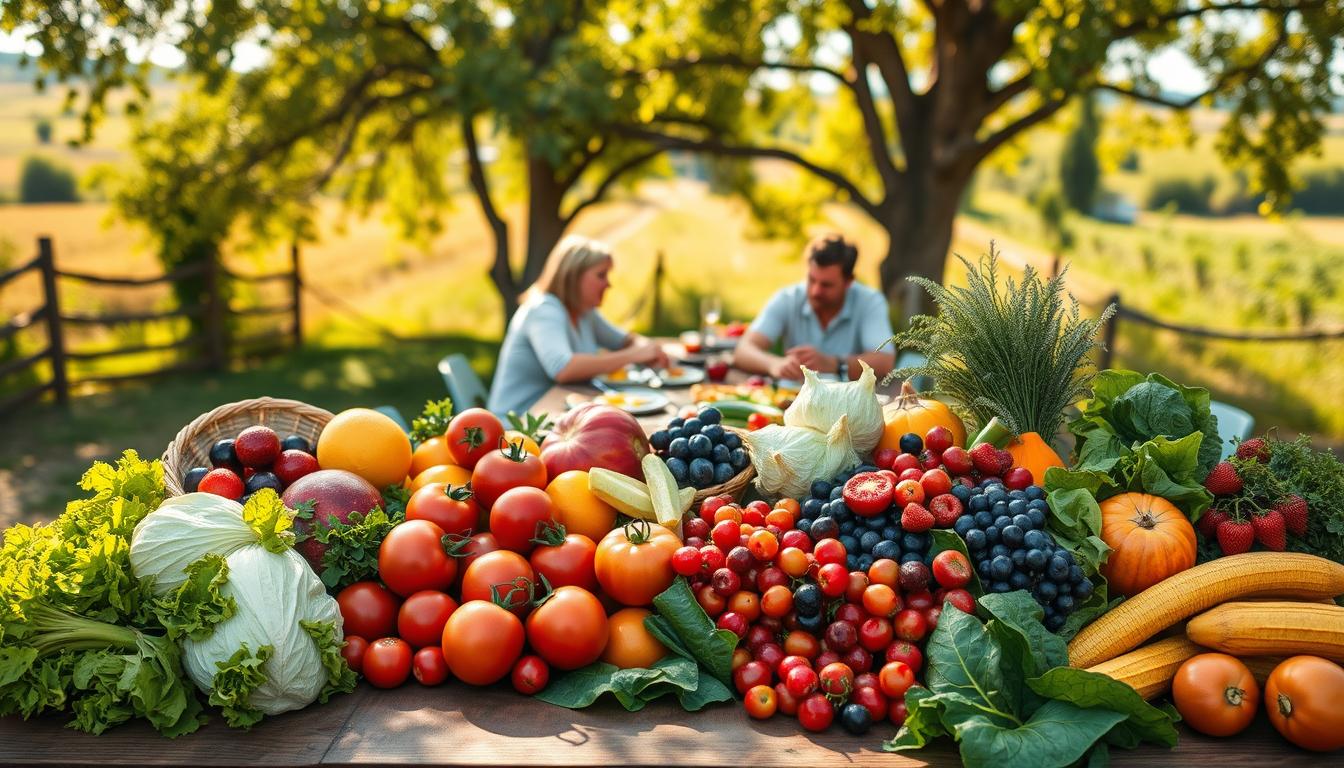
Definition and Historical Context
Before supermarkets, people ate what grew nearby. Spring meant asparagus; winter brought squash. Preservation methods like drying or fermenting stretched harvests. Today, global supply chains blur these lines.
Studies show peak-harvest produce packs 40% more nutrients. For example, summer berries have higher antioxidants than off-season imports. Ancient diets thrived on this cycle—modern science confirms its wisdom.
Modern Relevance: Sustainability and Nutrition
Choosing seasonal cuts food miles. Less transport means fewer emissions. Local farmers benefit too, keeping dollars in communities.
| Era | Food System | Key Traits |
|---|---|---|
| Pre-1900s | Local harvests | Preserved, seasonal, low waste |
| Today | Globalized | Year-round variety, higher carbon footprint |
The USDA promotes seasonal diets through programs like Farm to School. Chefs also champion this shift—seasonal menus dominate top restaurants. It’s a win for taste, sustainability, and health.
Why Seasonal Eating Matters for Your Health
Fresh-picked fruits and vegetables deliver more than just great taste—they pack a nutritional punch. When you choose foods harvested at their peak, you’re getting higher concentrations of vitamins, minerals, and antioxidants. This translates to tangible health benefits, from stronger immunity to reduced inflammation.

Nutrient Retention in Fresh vs. Stored Produce
Farmers’ market spinach has up to 50% more vitamin C than shipped greens, according to a 2024 study. Light, heat, and oxygen break down sensitive nutrients during transport. For example:
| Storage Method | Vitamin Loss (7 Days) | Best for Preserving |
|---|---|---|
| Refrigerated | 30–50% (water-soluble vitamins) | Leafy greens, berries |
| Frozen | 10–20% | Broccoli, peas |
| Canned | 60–90% | Tomatoes (lycopene stable) |
Research on Vitamin and Mineral Loss
Registered dietitian Kelsey Lorencz notes: “Water-soluble vitamins like B and C degrade fastest. Fat-soluble vitamins (A, D, E, K) last longer but still decline.” For instance:
- Bell peppers lose 15% of vitamin C daily at room temperature.
- Frozen blueberries retain 95% of antioxidants for 6 months.
Antioxidant Benefits and Disease Prevention
Seasonal produce like summer berries or fall kale contains higher levels of polyphenols. These compounds combat oxidative stress, lowering risks of heart disease and diabetes. A 2023 research review linked diets rich in fresh antioxidants to a 20% reduction in chronic inflammation markers.
Simply put: eating with the seasons gives your body the tools it needs to thrive.
How to Find Seasonal Foods Near You
Locating fresh, seasonal foods is easier than you think—if you know where to look. From bustling farmers markets to savvy grocery shopping, here’s how to fill your cart with nature’s best.
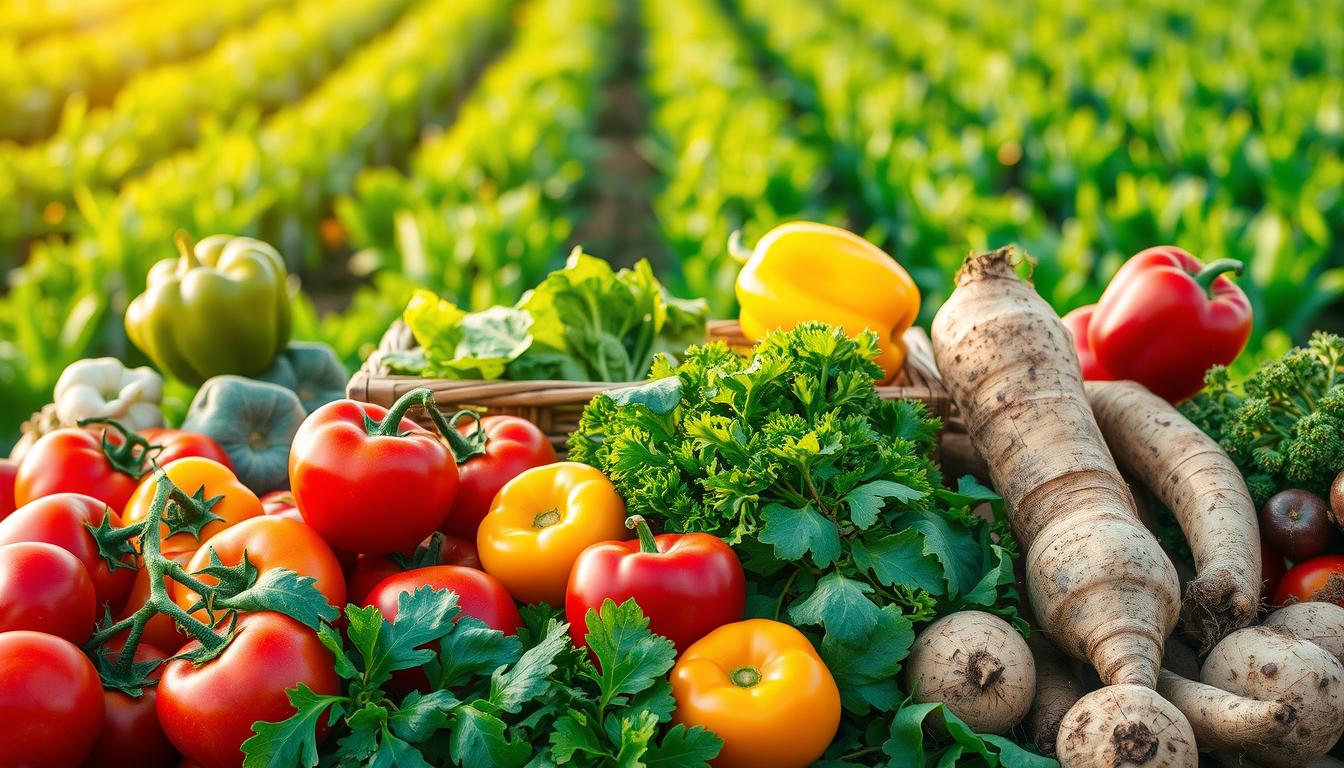
Farmers’ Markets and Local Growers
Weekly markets connect you directly with local farmers. Peak-season produce often costs less and tastes richer. Look for:
- Vendors with signage listing farm locations.
- CSA (Community Supported Agriculture) memberships for weekly boxes.
- Urban co-ops in food deserts, offering fresh alternatives.
Grocery Store Tips: Labels and Local Sourcing
Chef Katie Webster advises: “Check for ‘local’ labels—stores highlight regional partnerships.” Seasonal abundance often means:
| Indicator | Why It Matters |
|---|---|
| Lower prices | High supply = cost savings |
| Front-of-store displays | Produce at peak freshness |
Online Tools: USDA and Farmers’ Almanac Guides
The USDA’s produce guide offers hyperlocal crop calendars. For example:
- SNAP-Ed maps show harvests by ZIP code.
- Farmers’ Almanac predicts regional growing seasons.
With these resources, you’ll learn seasonal rhythms effortlessly.
Seasonal Produce Guide: What to Eat and When
Your plate transforms throughout the year, mirroring nature’s harvest cycles. Choosing in-season vegetables and fruits ensures peak flavor and nutrition. Below, explore the best picks for each season and their health perks.
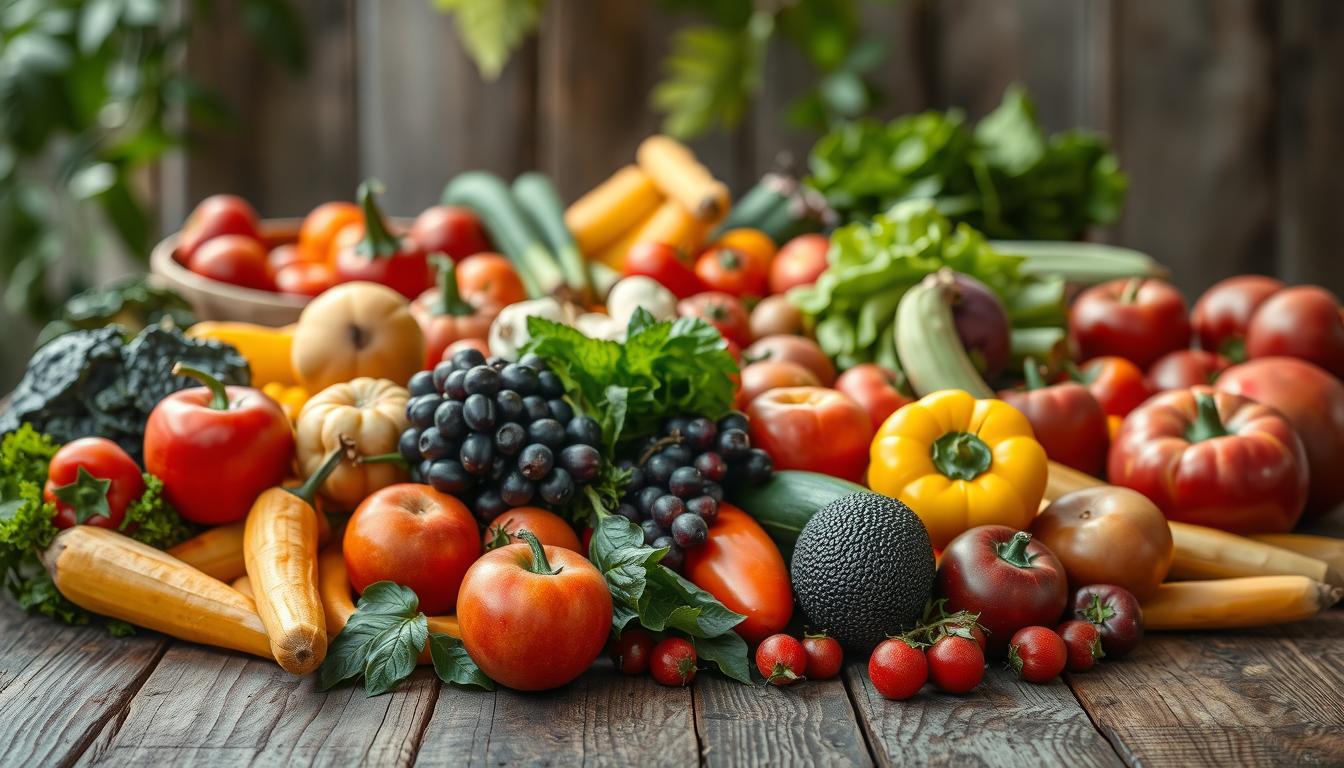
Spring: Artichokes, Asparagus, and Leafy Greens
Spring’s cool weather yields crisp greens and tender shoots. Asparagus packs folate for cell repair, while spinach delivers iron and fiber. Regional tip: Coastal states enjoy longer harvests.
| Spring Crop | Key Nutrient | Health Benefit |
|---|---|---|
| Arugula | Vitamin K | Bone strength |
| Radishes | Vitamin C | Immunity boost |
Summer: Berries, Tomatoes, and Stone Fruits
Sun-ripened fruits like blueberries burst with antioxidants. Tomatoes offer lycopene for heart health. Hydrating watermelon thrives in southern heat.
Fall: Squash, Apples, and Root Vegetables
Butternut squash is rich in *beta-carotene*, supporting vision. Apples provide pectin, a gut-friendly fiber. Vermont’s apple season peaks in October.
Winter: Citrus, Cruciferous Veggies, and Hardy Greens
Oranges combat colds with vitamin C. Kale and Brussels sprouts aid detox. Note: California grows citrus year-round.
Aligning meals with nature’s rhythm simplifies healthy eating. Rotate crops like nature intended for a diverse, nutrient-packed diet.
The Ultimate Guide to Seasonal Eating for Better Health: 5 Key Benefits
Eating with the seasons unlocks five powerful advantages beyond just nutrition. From richer flavors to community support, aligning meals with harvest cycles elevates every bite.
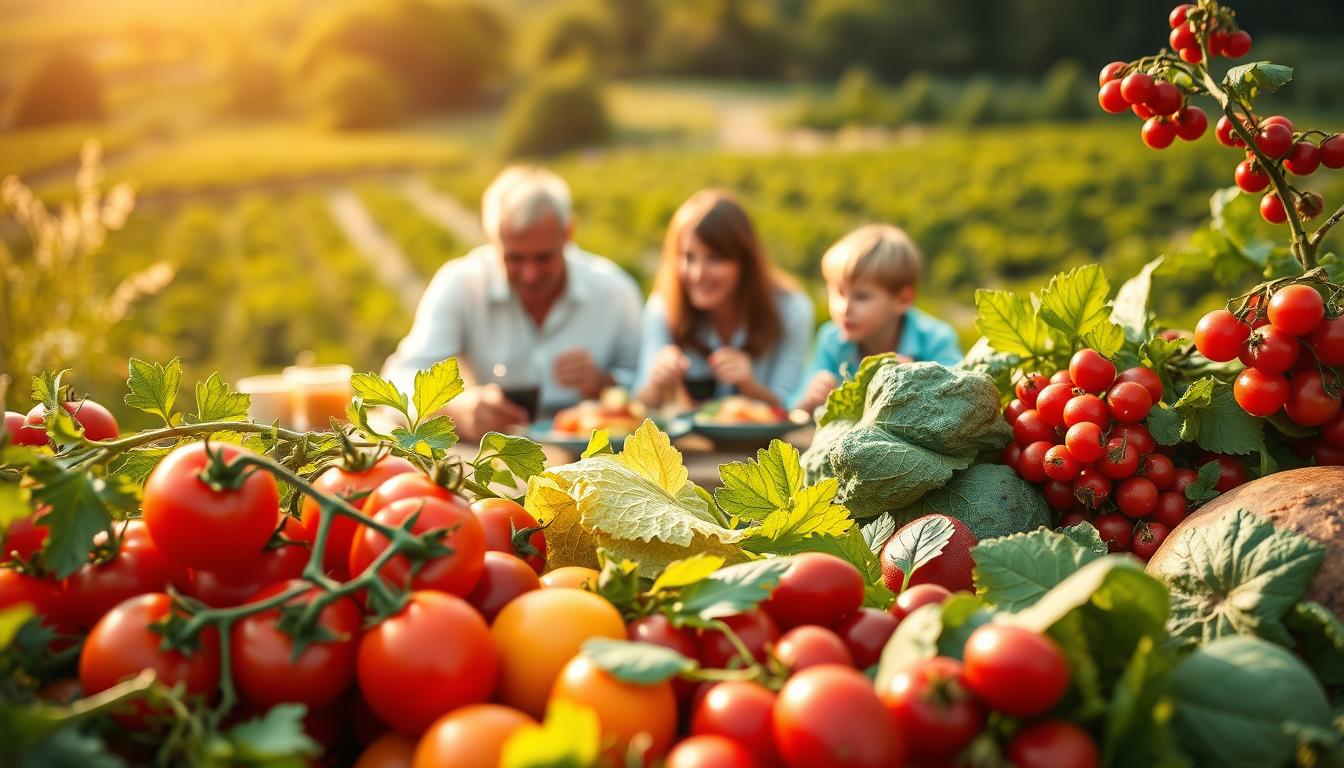
Enhanced Flavor and Freshness
Peak-ripeness produce bursts with natural sugars and vibrant textures. Summer tomatoes develop deeper *lycopene* levels, while fall apples crisp with balanced acidity.
Chef Marcus Samuelsson notes: “Seasonal ingredients need little embellishment—their quality speaks for itself.”
Cost Savings and Economic Impact
In-season foods cost 10–20% less due to reduced transport. A family of four saves ~$500 yearly by prioritizing seasonal picks.
Local food systems multiply value—every $1 spent generates $3.50 in community economic activity.
Lower Carbon Footprint
Locally sourced apples emit 85% fewer emissions than imports from New Zealand. Shorter supply chains slash refrigeration and fuel use.
Seasonal diets reduce food waste too—less spoilage means fewer landfill contributions.
Support for Local Farmers
Farmers’ markets and CSA subscriptions keep small farms thriving. Over 70% of market vendors rely on direct sales as their primary income.
Your purchases preserve farmland and traditional growing methods.
Diverse Nutrient Intake
Rotating seasonal crops ensures broader nutrient profiles. Spring greens offer folate, summer berries provide antioxidants, and winter squash delivers vitamin A.
This variety supports gut microbiome diversity and reduces deficiency risks.
Tips for Growing Your Own Seasonal Food
Nothing beats the taste of homegrown vegetables picked at peak ripeness. Whether you have a balcony or a backyard, these tips help you cultivate fresh greens and herbs year-round.
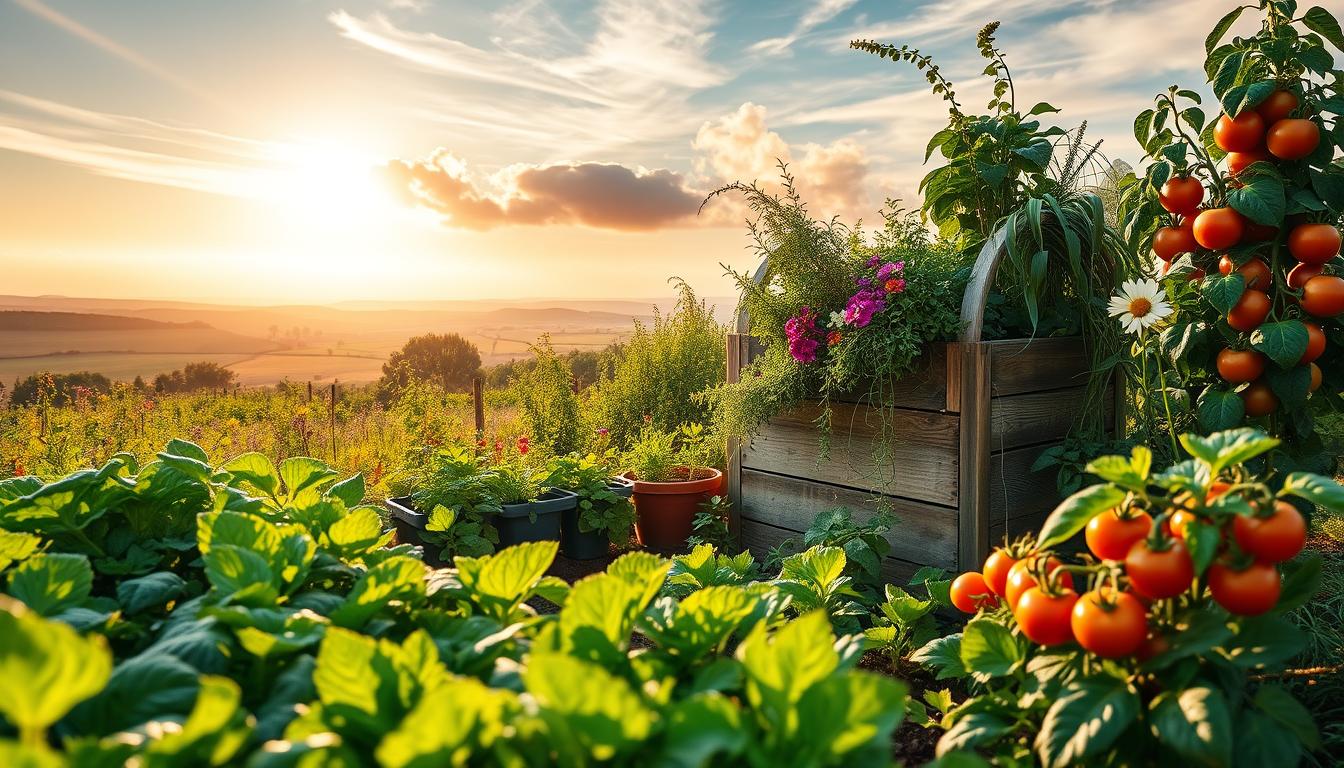
Small-Space Gardening: Herbs and Container Plants
Urban dwellers can grow cherry tomatoes, basil, or strawberries in vertical planters. Microgreens thrive on sunny windowsills—harvest in just 2 weeks.
Beebe Okoye, urban farming expert, recommends: “Peppers and dwarf varieties adapt well to pots. Use self-watering containers to reduce maintenance.”
Large-Space Crops: Raised Beds and In-Ground Planting
For root vegetables like carrots or beets, build raised beds with nutrient-rich soil. Vining plants (cucumbers, peas) need trellises for support.
Cold frames extend growing seasons in northern climates. They trap heat, allowing spinach and kale to thrive in early spring or late fall.
Composting and Sustainable Practices
Turn kitchen scraps into fertilizer by layering greens (vegetable peels) and browns (dry leaves). Composting enriches soil without synthetic chemicals.
- Balance: 2 parts browns to 1 part greens.
- Aerate weekly to speed decomposition.
NIH studies link gardening to reduced stress and improved mood. Digging in the dirt boosts serotonin levels—a natural antidepressant.
Simple Ways to Cook Seasonal Produce
Transform fresh seasonal produce into delicious meals with minimal effort. The right techniques preserve *nutrients* and enhance natural *flavor*, making every bite count.
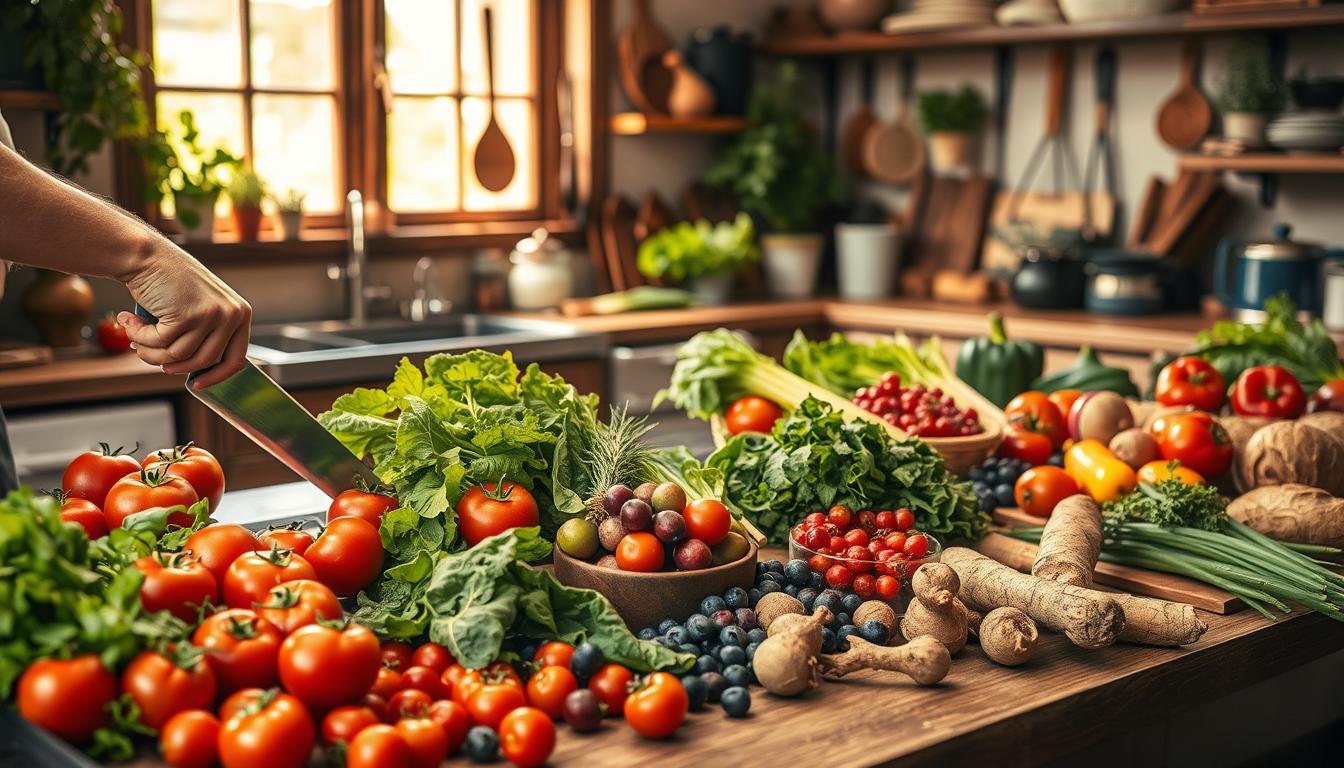
Raw Preparations: Salads and Smoothies
Uncooked foods retain heat-sensitive vitamins like C and B. Combine spring radishes with peas for a crunchy salad, or blend spinach and berries into a vibrant smoothie.
Tip: Add citrus dressing to boost iron absorption from leafy greens.
Quick Cooking Methods: Sautéing and Stir-Frying
High heat locks in *flavor* and texture. Stir-fried carrots keep 75% of their beta-carotene, compared to 11% when raw. Try garlic scapes with olive oil as a pasta topping.
Summer zucchini cooks in minutes—toss with herbs for a light side dish.
| Cooking Method | Nutrient Retention | Best For |
|---|---|---|
| Sautéing | High (fat-soluble vitamins) | Greens, peppers |
| Steaming | 90%+ (water-soluble vitamins) | Broccoli, asparagus |
Roasting and Grilling for Depth of Flavor
Caramelization enhances sweetness. Roast fall squash with maple glaze, or char Brussels sprouts for a smoky winter side. Asparagus gains a crispy texture when oven-roasted.
Avoid overcooking—preserve *nutrients* by keeping veggies slightly firm.
3 Seasonal Recipes to Try:
- Lemon Basil Spring Salad: Shaved radishes, peas, and basil with lemon vinaigrette.
- Summer Peach Salsa: Diced peaches, jalapeños, and cilantro.
- Roasted Root Veggie Medley: Carrots, parsnips, and beets with rosemary.
Seasonal Eating on a Budget
Eating fresh doesn’t have to break the bank—seasonal picks cut costs naturally. By aligning meals with harvest cycles, you save money while enjoying peak flavor and nutrition.
Bulk Buying and Preservation Techniques
Stock up when prices drop. Summer berries freeze well for smoothies; fall cucumbers pickle easily. Try these tricks:
- Freeze herbs in olive oil cubes for winter cooking.
- Buy root veggies like carrots ($0.99/lb in season vs. $2.49 off-season).
Affordable Seasonal Staples
These staples deliver nutrition without the markup:
- Cabbage ($0.79/head): Rich in vitamin K and fiber.
- Sweet potatoes ($1.29/lb): Packed with beta-carotene.
- Apples (fall): High in pectin for gut health.
Reducing Food Waste
Turn scraps into meals to cut food waste. Carrot tops make pesto; broccoli stems shine in slaws. Compare costs:
| Meal | Cost/Serving |
|---|---|
| Seasonal veggie stir-fry | $2.50 |
| Frozen pizza | $4.00 |
Partner with neighbors for group CSA purchases—split the box and the bill.
Conclusion
Your journey toward healthier eating begins with just one seasonal swap. Start by visiting a farmers’ market or trying a new recipe weekly. Small steps add up—like choosing summer berries over imported fruit or roasting fall squash instead of frozen sides.
This guide highlights key perks: better nutrition, cost savings, and a lighter environmental footprint. Research ties seasonal eating to lower risks of chronic diseases, proving it’s a long-term wellness strategy.
Explore CSAs or container gardening if you’re ready to dive deeper. Remember, even minor changes—like buying local apples—make a difference. Learn nature’s rhythms, and let them shape your plate.